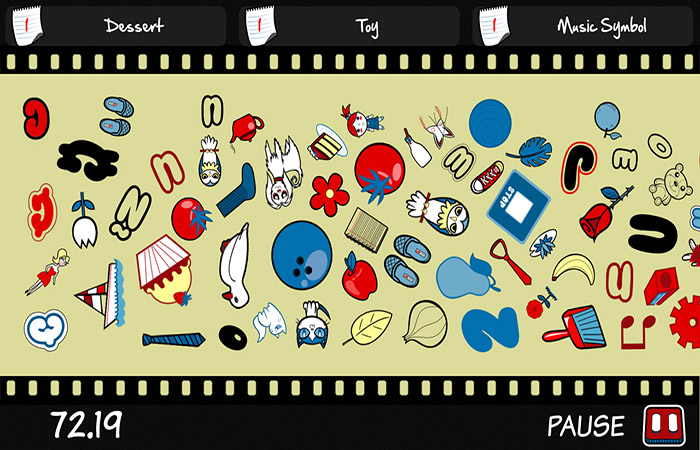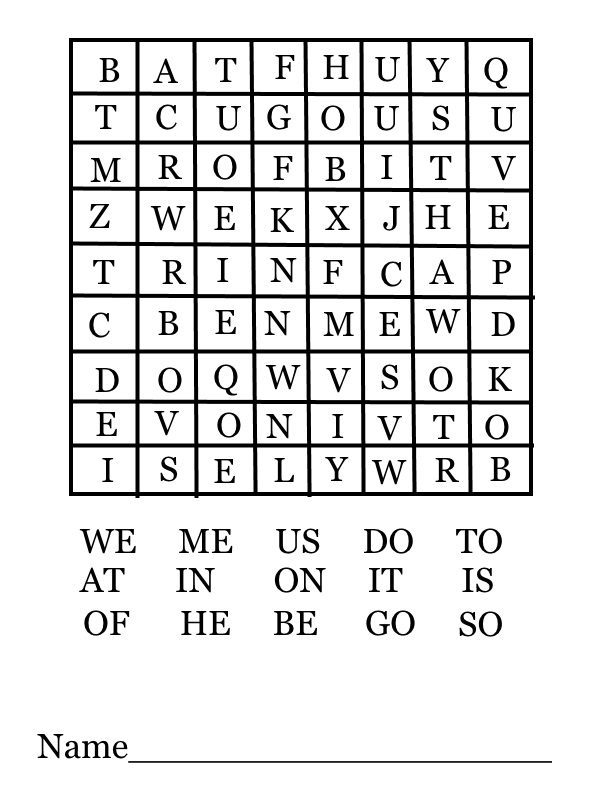
The goal is to use all 12 letters in as few words as possible. Letters on the same side cannot be used consecutively, and the final letter of each word becomes the first letter of the next word. There are three letters on each side, and players must connect them to make words at least three letters long. Letter Boxed takes place around, well, a box. The box behind Letter Boxed, sans letters. Von Ehren described it as “kind of an all-day thing that you come back to maybe three or four or five times in a day, when you think of more words.” Every word must be at least four letters long, and must use the center letter. Spelling Bee features a seven-cell honeycomb - one in the center and six around it, each with a letter inside - and asks players to make as many words as they can with those seven letters. It’s important, then, that while Spelling Bee and Letter Boxed are both word games, they each offer a different kind of experience and a unique challenge. The gaming team spent most of last year prototyping approximately one new title every month, including a physics puzzler featuring a golf ball, but has found that language and logic games are the ones that tend to resonate with the Times’ audience. Yet it’s mostly a coincidence that the Times’ first two games are both word games - that wasn’t the plan, according to Von Ehren. The two games feel like a good fit for the crossword section, which attracts a particular type of player: a well-read person looking for a mental challenge. “We’re trying to make these new games that anyone can kind of come in and really get their feet wet, and then maybe they’ll also migrate to the crossword as they go,” said Von Ehren, who leads the Times’ internal Games Expansion team, which numbers about 30, as its only designer. Instead, the digital games are meant to bring in a different audience by being more accessible than the crossword.

And in fairness, the aforementioned subscribership figure indicates that a lot of people were willing to pay for the crosswords alone. A Times representative did not specifically respond to a question about whether any complaints about the subscription cost led the company to introduce games to the package. Spelling Bee and Letter Boxed are part of an effort to attract more crossword subscribers. The honeycomb at the heart of Spelling Bee. (A crossword subscription costs $6.95 per month or $39.95 annually there’s a half-price discount for people who are already print or digital Times subscribers.) A month after debuting Spelling Bee, the company announced that it had topped 400,000 subscribers to the crossword section - twice as many as there were two years prior. Von Ehren said it is currently doing “better than we had hoped,” especially considering that so far, people have heard of the game primarily through word of mouth.Īt the same time, putting something on the Times’ crossword page means it will get plenty of eyeballs.


The company soft-launched another one, Letter Boxed, in mid-January.
#Ultimate word search 2 letter boxed android#
In May 2018, the Times expanded the section - which requires a fee separate from that of a subscription to the newspaper itself, and is available on the web as well as on Android and iOS devices - with a subscriber-exclusive word game, Spelling Bee.
#Ultimate word search 2 letter boxed archive#
In addition to the daily puzzle, and a crossword archive that goes back to 1993, the Times’ crossword section offers three daily logic puzzles - sudoku, KenKen, and Set - that are free for everyone. The crossword in question isn’t any old crossword it’s the New York Times crossword puzzle, which is an institution so renowned and revered that its longtime editor is a minor celebrity who was the focus of a 2006 documentary. “We live in the shadow of the crossword,” Von Ehren told Polygon in a recent phone interview. Game designer Sam Von Ehren has a problem: He knows he’s always going to play second fiddle.


 0 kommentar(er)
0 kommentar(er)
